Looking for engaging and rigorous Halloween school activities for your Secondary ELA classroom? Look no further! These mini-lessons will build close reading skills, practice inferencing, and get students thinking creatively.
Whether you are a Halloween lover or a Halloween tolerate-er, it will be on the forefront of your students’ brains this time of the year. They are likely dreaming up their costumes, gossiping about the hip parties, and totally ignoring your lessons!
Many of the resources I’ve linked below are also available for 25% off in this spooky and spectacular Halloween Activities resource bundle! Check out the 8 included resources here.
Here are 15 Halloween school activities for secondary ELA that will allow you to use that excitement in your classroom:
1. Analyze Symbolism & Allegory with Candy
It seems like, as soon as the calendar flips to October, students have candy on the brain! You can “lean in” to this energy. If you’re reading a story with heavy symbolism (such as “Masque of the Red Death” by Edgar Allan Poe), here’s the perfect anticipation activity! Teach students about symbolism with Tootsie Roll Pops. Students assess the evolution of concrete to abstract attributes (hard on the outside, soft on the inside – get it?) and come up with an overall meaning for the symbol. You can read more about how I set up this activity here.
2. Watch this movie trailer re-cut for tone analysis!
“Scary Mary” is a re-cut of the 1964 Mary Poppins trailer in which it’s made to look like a horror film. It’s a brilliant example of tone and suspense. It will surprise students that a change in music and a juxtaposition of certain scenes can make even the happiest of characters seems menacing.
3. Write a creepy short story!
In my Halloween ELA activity, Abandoned Places students read about ten abandoned places from across the world. Then, they use one of them as the setting for a piece of Flash Fiction, a very short low-stakes writing activity. Stories are short enough that students can do a gallery walk to read others’ work or share them in small groups.
4. Listen to “Sound the Bells” by Dessa
This song has serious apocalyptic vibes and is perfect to analyze! You could use it as a jumping-off point for other creative writing (short stories, poetry, etc.) or have students connect it to other texts they’ve read or watched. Check out these other songs to use in ELA, year-round!
5. Read “Demystifying Fear”
This nonfiction passage is a perfect Halloween school activity for spooktacular critical thinking! Students learn about the physiological origins and effects of fear and then assess why some people enjoy being scared. This resource comes with a vocabulary-in-context activity.
Get more high school reading comprehension passages here!
6. Watch “The Monsters Are Due on Maple Street”
Sharing this classic episode of The Twilight Zone is one of my favorite Halloween ELA activities. Their expectations are successfully subverted, and we can have great conversations about hysteria and the classic allegory for the Red Scare. It’s also only 25 minutes long, so they can finish it in my 42-minute periods. TV can be a great tool for engaging reluctant readers and teaching students about plot, characterization, allusion, etc. I even wrote a blog post about my 15 favorite TV episodes for ELA! 🙂
7. Investigate “who dunnit?” with “Black Cat” by Edgar Allan Poe
I made a Pre-Reading Inferences Challenge for my students where they go through a simulation as a young detective investigating the mystery of the black cat. The events follow the story, but without the first-person narrator, it becomes a mystery that students solve using clues and evidence they find along the way. At each step, students share their inferences with me (The Police Chief) and I make sure they’re on track before they proceed. Afterward, we read the story and they confirm whether they were correct.
8. Compare Halloween costumes
Halloween is a great time to get students thinking about cultural appreciation vs. appropriation.
This video from Teen Vogue features six young women of diverse heritage giving specific examples of Halloween costumes that “co-opt their culture”. This video will help students identify cultural appropriation and analyze how the wearers’ privilege (or lack of privilege) impacts how the garments are viewed. After watching this video, students could reflect on costumes they have worn in the past and brainstorm some costumes for the future that are not appropriative.
9. Reimagine some classic Poe stories
To me, reading spooky stories is a perfect fit on a list of Halloween ELA activities. I suggest checking out the new anthology, His Hideous Heart, edited by Dahlia Adler. Each short story reimagines a classic Poe tale. This is a great add to your classroom library! You could do a read-aloud or have students read the story of their choice in groups and discuss it. If you want to extend this concept, have students compare the reimagining to the classic tale. Students can decide how the reimagining impacts the story and what novelty it brings to the table.
10. Play a “haunted” escape room!
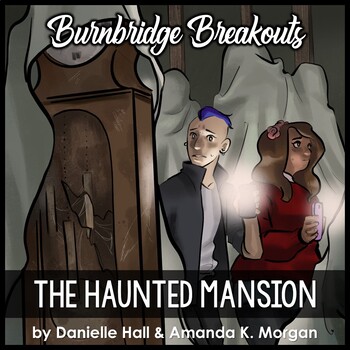
This game, The Haunted Mansion, is part of my escape room series, Burnbridge Breakouts, a digital escape room series that provides reading intervention for 8th and 9th-grade students who read at a 4th-5th grade reading level.
Each game is a reading adventure with puzzles and riddles that engage students in collaboration and critical thinking. Students practice making inferences, sequencing, and prioritizing information.
You also get thematically-related nonfiction readings, creative writing, vocabulary, and research activities at the target grade level.
The Haunted Mansion follows teens Jude and Mica as they explore the Wellsby Mansion, a rite of passage in their town. This game introduces students to the main mystery of the game, and for the first time, our characters get the sense that someone is sending them messages. It’s spooky, but not scary. (Think Scooby Doo, not Saw.)
11. Watch the short film Lock Up (8th grade + up)
This short film is very effective at demonstrating and teaching suspense. I don’t want to spoil the plot, but it’s only 3:34, so you can easily find out for yourself.
Here are some ideas for post-viewing discussion questions: What do we learn about the protagonist in the first 45 seconds, and how does that information help increase the suspense? What is the effect of cutting back and forth to the surveillance camera footage? What visual and audio effects did the filmmaker use to create suspense?
Content warning: This film doesn’t show any blood or weapons, but it is highly suspenseful and features some startling (but brief) jump cuts at the end. I think this film is great for teaching suspense with short films for 8th grade and up, but you know your students best.
Learn how I use short films to teach literary elements, here.
12. Ready some scary stories
“The Girl Without a Face” by Marie Lu (HS)
CW: rape, suicide
You can find this story in the YA horror anthology, Slasher Boys and Monster Girls.
Our main character, Richard, isn’t sleeping. His closet door is the only door in his family’s new house that won’t open, and no one knows why. It’s only as Richard’s anxiety and terror deepens that we get a flashback to an experience he had at a party. Even though we get the flashback from Richard’s perspective and he doesn’t think he did anything wrong, it’s clear that he raped a girl and locked her in a closet. She later died by suicide.
This is a terrifying revenge story, but it is as artful as any Poe tale. We empathize with Richard at first – he’s a bright boy, and we’re initially worried for him. It’s only as we get to know him we discover that he’s not the hero, but the villain.
Teaching Ideas: This is an excellent text for teaching characterization. How does Lu build sympathy for Richard before the story’s turning point? How does Richard’s lack of remorse impact the reading of the second half?
Check out this post to find more short horror stories for teens and learn how I use them for Halloween activities in the classroom.
13. Listen to a spooky song
“What’s He Building in There?” – Tom Waits (MS/HS)
Okay so, this is less of a song and more of a spoken word piece, accompanied by bizarre sound effects. The audio works on its own, but I recommend showing the video as well, if possible.
In this piece, an increasingly anxious narrator describes the actions of his neighbor, punctuated with the repeated question, “What’s he building in there?” As the narrator’s suspicion heightens, even seemingly innocuous actions he is describing take on a sinister appearance. With each repetition of “What’s he building in there?” the listener might begin to wonder who is more threatening, the neighbor, or the narrator?
This “song” might work well paired with a Poe poem that also features repetition, such as “The Raven” or “The Bells”. I have more ideas for teaching suspense in this post, and more song suggestions for ELA here.
14. Play some Halloween classroom games
Play “Monster Mash”–A Halloween improv game (a variation on “Party Quirks”)
A new monster hunter in town hosts a party to get to know some local monsters. Three actors receive scary characters or classic monsters from audience suggestions while the host waits outside. The host reenters and starts setting up the party. One by one, the doorbell rings and each monster enters, joining the party. Now, the monsters won’t come right out and say who they are, but they must use dialogue and reactions true to their character. The monster hunter is gauging all of this information and trying to come to a conclusion. Once the monster hunter can successfully identify each monster (and be met with audience applause), they can slay the monster (what a terrible party host!).
The host wins when they have defeated all the guests. This fun Halloween activity is sure to be a BIG hit with your students 🙂
I share more of my student’s favorite Halloween-themed classroom games in this post!
15. Let students “show & tell” about their favorite monster
Monsters Through Time – a middle school research project
In this fun and unique resource, students research and create a digital magazine or PowerPoint about the history of a monster, its representation in literature and pop culture, and potential metaphorical analysis.
This resource has so many applications! It’s obviously great for strengthening students’ understanding of literary devices like symbolism, metaphor, and characterization, and you can even use it to practice public speaking, or as an enrichment activity for a spooky class novel.
These Halloween school activities for ELA are some easy ways to boost student engagement AND keep it rigorous. Every hint of costume or candy may distract them, but you can get them back on track with these ideas. What else do you have brewing (see what I did there? Like witches!) this season?
Let me know in the comments or tag me on IG @nouvelle_ela! I can’t wait to hear from you!

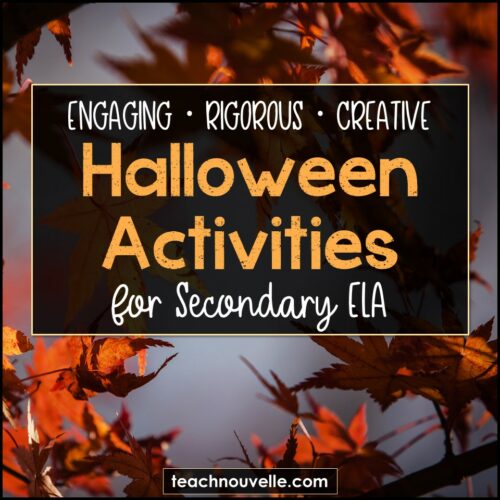
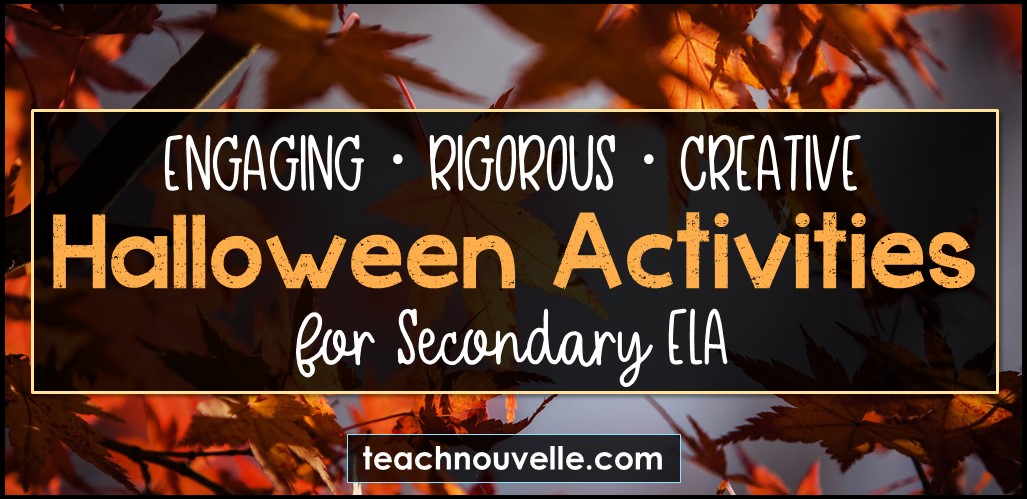
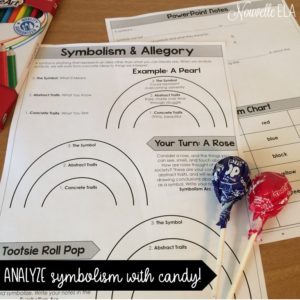
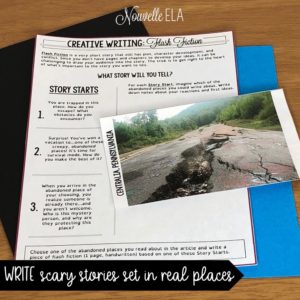
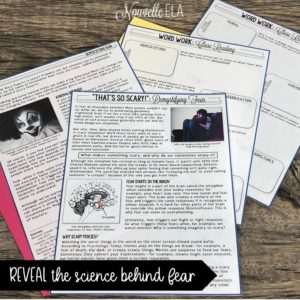
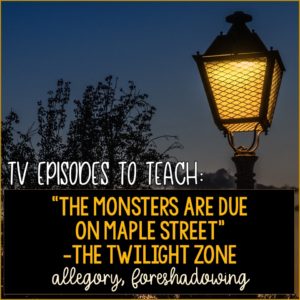
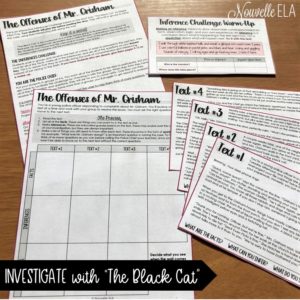
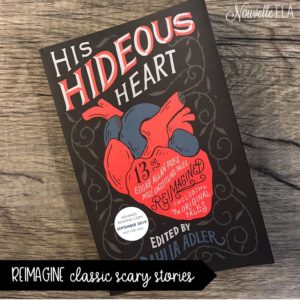
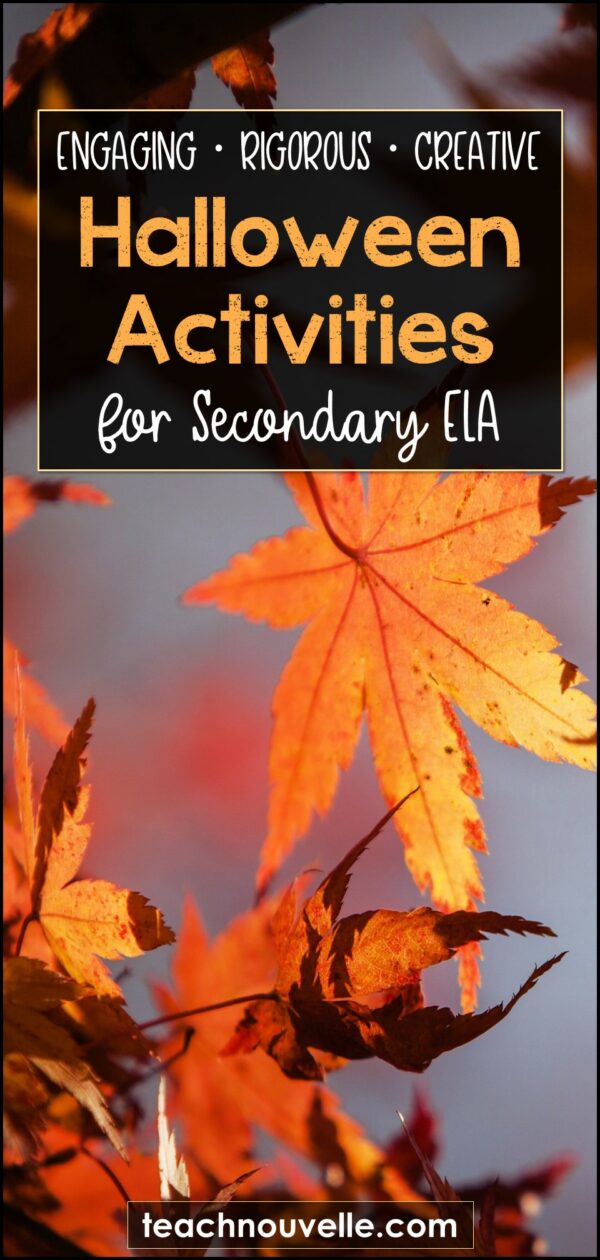
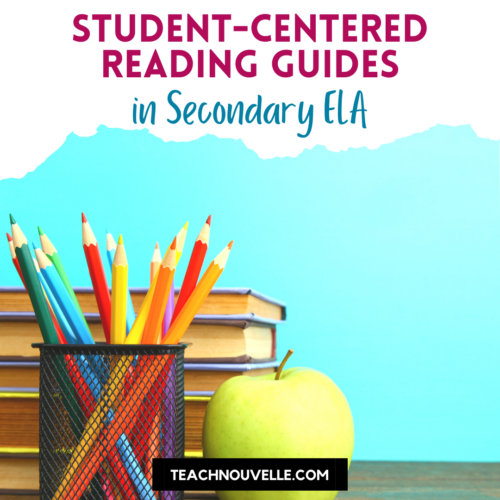
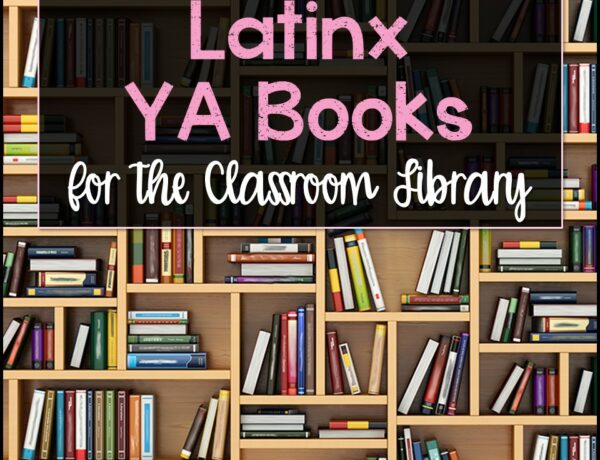

2 Comments
Alicia Williams Neely
October 14, 2022 at 12:17 pmThanks for the ideas❤️
Gynna Rosas
October 16, 2022 at 12:28 pmThank you